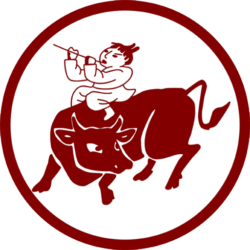Inner Qigong is a synthesis of traditional Qigong, Developmental Movement and Somatic Exploration. Its aim is to bring awareness to different body systems such as the inner organs, the fascia, the skeleton and the muscle system and to explore how they all contribute to your ways of being, both in body and mind.
We use the developmental movements to show how the meridians of Chinese Medicine are actually the pathways along which we learn, as babies, to join up the body and make intentional movements. Babies not only learn to use their bodies through these movements but also develop their characteristic way of being and personality.
The twelve movement meridians act together in three groups of four. Each of these groups teaches a profound life lesson by embodying its energy through the movements of the Qigong.
The first lesson is how to define and be grounded in yourself. If you are centred and relaxed in how you are then you can both have clear boundaries and be open to receive support and nourishment from the outer world. The physical side of this is learned by first feeling how the ground supports us, feeling the upward force from the ground flowing up into the inner organs and supporting us from underneath.
When the organs are expanded by this support they form a buoyant and springy centre to the body, which we can relax onto without collapsing. In fact, their bouncy tone moves our energy upward and outward. This self-support underlies our ability to be authentic, have clear boundaries and ultimately have mutually supportive and nourishing relationships.
The second lesson is how to act and move in a way that is aligned with your inner spirit. Many of us inhibit our spirit because we are over-concerned with other people’s approval. Physically we learn to act with spirit by feeling our inner motivations and listening to them. Maybe we don’t act on them all the time because we also live in society, but at least we acknowledge them.
Physically, we can feel this clarity by learning to feel how the force of our movements travels through the skeleton and how to align our bodies so that our actions are consistent with our intention. The Inner Qigong of this group of meridian movements first teach us to become aware of our skeleton as the physical aspect of our core being. The qigong develops practices which access our primal energy – deep, often unconscious, impulses that give vitality to life – and to feel how to align our actions with our primal spirit.
The third lesson is how to creatively deal with conflict. Once we act authentically and move in the world we come into contact with other actions and movements that might not agree with ours. Two dysfunctional ways of dealing with this conflict are fight and flight. In one we try and dominate and, in the other, we collapse and lose ourselves. In both cases, we are not able to find a mutually agreeable relationship.
This is also true inside our body. Sometimes an action seems to require a movement that puts an unhealthy strain on another part of the body. The trick is learning how to involve the whole body in all the movements so that each part feels integrated and involved. Physically we learn this through developing elasticity in the muscles and fascia which give the sense of being joined together. The Inner Qigong of this group of movement meridians first shows how all parts of the body are connected and then uses those connections to develop spiral movements, which involve every dimension of the body.

